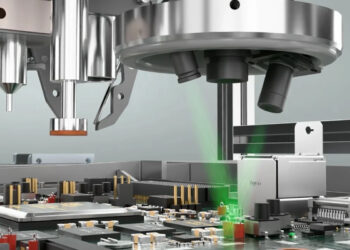Legislative action on batteries is speeding up, but some of those laws are missing their marks and creating a regulatory environment that is difficult to recycle in, panelists said at the recent E-Scrap Conference in Orlando.
Moderated by Leo Raudys, president and CEO of Call2Recycle, “Navigating the Surge: The Impact of New Legislation on Battery Recycling” included Jeff Farano, manager of compliance and governmental relations for SA Recycling; Rob Lawson-Shanks, CEO and co-founder of Molg; and Jeff Gloyd, founder of Gloyd Recycling Solutions. The session was part of the 2024 E-Scrap Conference, held Sept. 30-Oct. 2 by Resource Recycling, Inc.
Raudys noted that there’s “a wave of regulation hitting the states that’s driving a considerable amount of change and growth and investment in the battery recycling world.”
“We’re keenly interested in this because it’s going to dramatically increase the scope of what we do,” he said. Historically Call2Recycle has collected about 8 million pounds of batteries a year, he added, but he expects that number to grow to 40 million pounds within the next two years.
Regulation is sometimes written for a positive purpose, Gloyd said, but “oftentimes leaves out a very important conversation: how it impacts the collector and the processor of that material from a cost perspective, from a labor perspective and, most importantly, from a risk perspective.”
In addition, there “just is not a lot happening legislatively,” Farano said, adding that on the federal level, lawmakers are “still learning, they’re still studying, they’re still understanding what are the problems that we are dealing with.”
At a state level, many are in a wait-and-see pattern, Farano said. A few states have started passing laws about batteries, such as California, Vermont, Pennsylvania and Washington, but those are largely in response to fires.
“The problem that we’re having concerning the legislation around the states is it’s not encouraging recycling,” he said. “They’re more restrictive, they’re seeing the problems of these batteries in MRFs that are causing fires, and their immediate reaction to that is, ‘oh, my God, we need to put more control, more restrictions on it.'”
Instead, laws should be pressuring manufactures to design batteries so they are easier to handle and recycle, he added. Lawson-Shanks echoed that need. Molg focuses on robotic disassembly for reuse before recycling and also works on creating a circular manufacturing chain, which means designing things to be recycled.
“If you’re going to glue that whole assembly together and make it the last bit of the stack and require 45 minutes to get out, then it’s ultimately going to be always very economically challenging to do that in any way that can preserve value,” Lawson-Shanks said.
Farano added that extended producer responsibility for batteries is one way to address that design challenge. If battery producers are forced to take back and handle batteries that aren’t financially feasible to be reused, repurposed or recycled, they may be forced to design more economically viable alternatives, he said, “because they don’t want these batteries.”
Design is not a silver bullet, Gloyd said. Consumer education is also vital, as is developing better sortation technology and helping keep down the costs of processing and transporting batteries.
“The market dynamics in our industry tend to ebb and flow pretty regularly,” Gloyd said.
For example, a year and a half ago the selling price for a lithium-ion battery with high nickel and cobalt content was around $1.40 per pound, but that rate is now 70 cents per pound. At the same time, processing costs have risen: Recycling an alkaline battery used to cost around 25 cents per pound but now is between 50 and 70 cents.
“It’s a disincentive to manage this material properly,” Gloyd said. “I think legislation can help a lot with that, but also understanding those market dynamics and being able to price those materials and then again, educating customers that there is a cost and at times this isn’t a valuable material.”
One cost driver is the classification of batteries as hazardous material. Farano noted that under the U.S. EPA’s coming changes to lithium battery recycling regulations, that classification is not likely to change.
“They’re still doing a lot of studies,” Farano said. “They don’t quite yet know what they’re doing,” and as the designation as hazardous waste increases the cost of handling batteries, “we were hoping that they would back off a little bit on that, but they have not.”
“I don’t expect them to,” he added.
Gloyd said that classification adds to the cost of transportation in particular. Recycling is a regionalized business, he said, as “a lot of the material we manage doesn’t transport well, transports light or transports dangerous.”
Recent federal funding, such as that coming from the U.S. Department of Energy, can help bring those costs down by increasing capacity and giving recyclers closer end markets, Gloyd said. And recycling capacity is growing rapidly, in part due to that financial assistance from the DOE.
“I’m going to go on a limb here and say the quiet part out loud,” he said. “Is the DOE overfunding battery recycling projects? I think it’s hard to argue that they aren’t. And maybe there’s a strategy to that.”
Looking forward, Lawson-Shanks said more EPR is at the top of his legislative wish list, and Farano said he wants to see legislation around better design for recycling.
“If legislators are going to stick their nose into manufacturers, which I don’t like them to do too much, but in this case, if we can encourage them more to design these vehicles and batteries to be able to be more easily recycled, reused, repurposed,” that will be a benefit, Morano said.





















